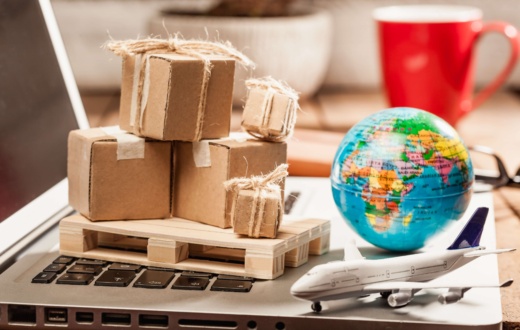Between 2013 and 2018, the global packaging market saw a 6.8% increase. The majority of growth has come from less developed countries, which have seen an increase in the number of consumers moving to urban areas and adopting a western lifestyle.
This has resulted in an increase in the demand for packaged goods, which has been accelerated on a global scale by the E-commece industry.
The international packaging industry is significantly impacted by a variety of factors. Keep reading to find out the four most significant trends that will play out over the course of the next decade.
1. Consumer Trends
The global market for online retailing continues to grow rapidly, driven by penetration of the Internet and smartphones.
Online shopping accounts for an ever-increasing share of total consumer spending. This will continue to increase up until the year 2028, and result in an increased demand for packaging solutions, particularly packaging types that are made of corrugated boards as they are able to ship goods securely through distribution channels that are more complex.
On-the-go consumption of products like food, beverages, and pharmaceuticals is becoming increasingly common.
Because of this, there is a growing demand for packaging solutions that are user-friendly and portable, and one industry that stands to benefit greatly from this trend is the plastic industry.
Convenient and Smaller Size Packaging
Amid the rise of one-person households, more consumers – especially younger age groups – are inclined to go grocery shopping more frequently and purchasing fewer items at a time.
This has resulted in growth in the convenience store retailing industry and an increase in demand for more convenient and smaller size packaging.
2. Economic and Demographic Growth
The expansion of the global economy as a whole is forecast to continue over the course of the following decade, supported by the expansion of consumer spending in emerging markets.
The world’s population is expected to keep growing, and the rate of urbanisation will keep accelerating, particularly in the most emerging markets, such as India.
This results in higher consumer incomes, which translates into increased spending on consumer goods, and higher demand for consumer good packaging.
An increase in life expectancy will lead to an increase in the average age of the population, particularly in key developed markets like Japan.
This will lead to an increase in demand for healthcare and pharmaceutical products, which in turn, lead to a rise in demand for packaging that is tailored to the requirements of elderly people.
Moreover, the rise in the number of one-person households has resulted in an increased demand for products that are packaged in smaller portion sizes with the ability to be resealed or heated in the microwave.
3. Sustainability
The European Union has been a leader in sustainability with a push toward the principles of a circular economy. Plastic waste has come to the forefront of public consciousness, and as a high-volume, single-use item, plastic packaging has been the subject of heightened scrutiny.
To address this issue, a number of strategies are currently being developed, some of which include switching to different types of materials, investing in the research and development of bio-based plastics, designing packaging to make it simpler to recycle, and enhancing plastic recycling and waste management practises.
In this regard, packaging materials and designs are becoming increasingly important to brands as a means of demonstrating their commitment to the environment. Brands understand that consumers now place sustainability as a factor in their purchasing decisions.
4. Brand Owner Trends
Consumers in the 21st century are less brand-loyal. Because of this, there is a growing desire in personalized or customised packaging. Digital printing, including inkjet and laser toner, play a critical role in this. Higher throughput printers dedicated to this type of packaging will be in high demand.
This fits in with the idea of integrated marketing even more, since the packaging can be used to link to social media.
5. Innovative Packaging Technologies
In the global packaging industry, there’s a growing trend of using smart packaging. This means adding digital elements like QR codes or RFID chips to packages, so customers can easily get information about products. We’re also seeing more sustainable packaging options, like materials that break down easily. Plus, there are new types of packaging that can keep products fresh for longer and give real-time updates on their condition. These changes are all about making packaging more helpful and eco-friendly.
All in All
In summary, the global packaging market has experienced significant growth in recent years, driven primarily by emerging markets and the rise of e-commerce. Key trends such as the increasing demand for online retail, convenience-oriented packaging, and sustainability initiatives have reshaped the industry landscape.
Additionally, economic and demographic factors, including urbanization and an aging population, are driving further expansion. With sustainability becoming a focal point for consumers and brands alike, innovations in packaging technologies, including corrugated carton boxes, are poised to drive future growth.
Research by Smithers forecasts a nearly 3% annual expansion, surpassing $1.2 trillion by 2028, indicating sustained momentum in the industry. This underscores the pivotal role of packaging in supporting economic activity and consumer lifestyles, with even stronger growth anticipated post-pandemic, propelling the global economy to new heights.







